Review: ZTE ZMax Pro for MetroPCS
Jul 29, 2016, 7:00 AM by Eric M. Zeman
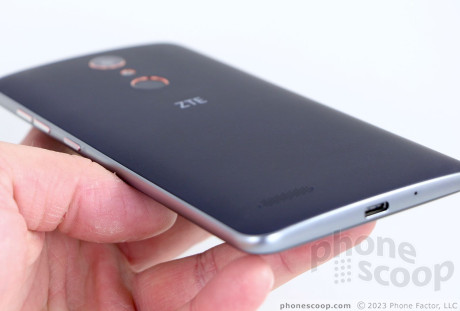

ZTE ZMAX Pro
The ZMax Pro is an Android smartphone that delivers a premium experience and powerful performance at an affordable price point. This budget-minded handset is no cheap simpleton. The ZMax Pro is a well-rounded addition to MetroPCS' roster of phones. Here is Phonescoop's in-depth repot.
Hardware
Is It Your Type?
The ZTE ZMax Pro is a budget phablet like no other. It boasts a compelling design, a strong spec sheet, and an impressively low price point. MetroPCS customers would be hard-pressed to find a better bargain than the ZMax Pro.
Body
The ZMax Pro is monstrously big, and sort of cool looking. The phone dwarfs nearly every other phone on my desk and yet it manages to stand out for reasons other than its size. The phone's design is relatively conservative, yet unique.
From a distance, the ZMax Pro could be a clone of the Grand X Max 2, also made by ZTE (sold by Cricket Wireless). The phones share black glass, gray fames, and blue-colored rear panels. The differences are small but important. On the functional side, the ZMax Pro has a fingerprint reader. On the design side, ZTE gave the Grand X Max 2 a glossy rear cover, while the ZMax Pro has a matte, soft-touch rear cover that catches the eye thanks to its deep hue.
The ZMax Pro has a huge 6-inch screen. It's a respectable 0.35 inches (8.9mm) thick. At 6.17 ounces, it is lighter than the Grand X Max 2, but not by much. The ZMax Pro is in no way a one-handed phone. My thumb can barely stretch across half the display, leaving the top portion unreachable. Many phones this size include a stylus, but that would have added to the cost here. The phone barely fits into jean pockets; even when it does, the phone isn't all that comfortable. For example, it jammed into my leg every time I sat down. It fits better in rear pockets, but putting your phone there carries serious risk.
The phone is made of decent materials, especially for this price point. The 2.5D curved glass feels smooth and strong, while the polycarbonate frame inspires confidence, and the rear panel is pleasing to the touch. My only complaint on build quality is the SIM card tray, which is noticeable thanks to some gaps. Otherwise, the phone is put together tightly; it doesn't look nor feel cheap.
Like so many other phones, the display consumes most of the front surface. The display doesn't blend in perfectly with the surrounding bezel, but it comes close. The glass is curved along the edges to help round out the profile a bit. Below the display, three circles mark the back, home, and multitask capacitive keys. These buttons worked well.
ZTE gave the plastic frame a nice metallic grain, which every so often catches light and shines brightly. It's no substitute for actual metal, but it still looks good. The SIM/memory card tray is the only element on the left side of the phone. I found it easy to remove with a paperclip. The screen lock and volume buttons are on the right edge. The former is just above the phone's waistline, while the latter is closer to the top. The screen lock key has an excellent profile and a ribbed texture to help set it apart. The volume buttons have somewhat less of a profile and smooth textures. These controls are simple to find and use effectively, and the buttons deliver great feedback. As per the norm, you'll see the headphone jack perched on the top edge and the USB-C port tucked into the bottom. (Note that USB-C is still new, so compatible accessories may be harder to find until it becomes more common.)
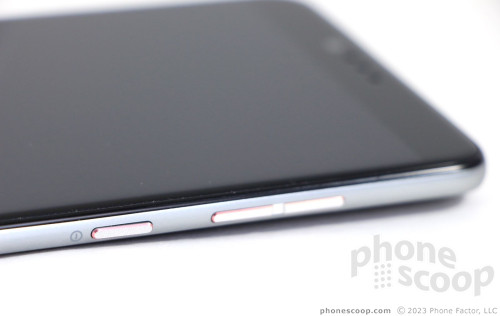
The ZMax Pro's rear surface is curved gently, which helps the phone sit just a bit deeper in the palm. The seam where it meets the frame is nice and even. The contrast between the dark blue and gray is appealing. ZTE made sure the function elements of the phone stand out from a design perspective. A trio of circles — camera, flash, and fingerprint reader — is lined up right along the center. All three have a rose gold rim that makes them pop visually. The camera module protrudes just a little bit. The fingerprint reader is recessed a bit. Like most rear-mounted readers, it takes a bit of practice to learn where to find it without looking but becomes second nature soon enough. The speakerphone is also located on the back.
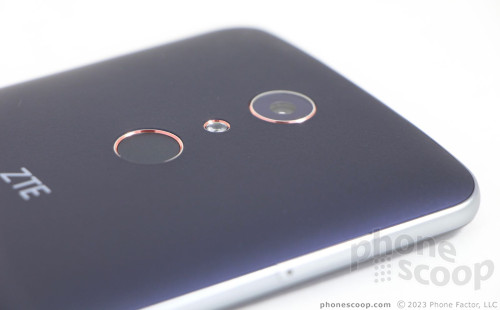
Some will no doubt be distressed to learn that the ZMax Pro's battery is sealed inside. Sorry, folks: there'll be no swapping out batteries on this one.
Screen
Like the Grand X Max 2, the ZMax Pro has a 6-inch full HD display. I wouldn't be surprised to learn that the panels are identical. The 1080p resolution is plenty to give the ZMax Pro a sharp screen. (Actually, at this size, that resolution might be a minimum.) The screen looks good and delivers high-quality text and imagery. The display is bright, but outdoor viewability could be better. I consistently had to turn up the brightness when outside. I was pleased with viewing angles, too. The color stays on point and brightness drops only a small amount when the phone is tilted around. Buyers at this level can't ask for a better screen.
Signal
MetroPCS operates on T-Mobile's network around the U.S. The device performed at the same level as other MetroPCS handsets in the greater New York area. The ZMax Pro did a good job connecting calls throughout Manhattan, and was able to maintain calls at highways speeds without problem. The phone didn't drop nor miss any calls while I tested it. Data performance was quite good. Speeds were excellent and meant the phone was able to stream video and music over the network with ease. Image- and video-intensive apps such as Facebook, Twitter, and Instagram all flowed well, and apps downloaded expediently.
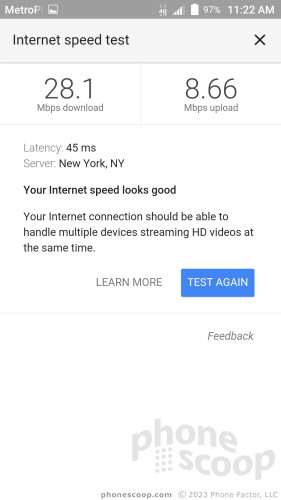
Sound
Most people will be pleased with the ZMax Pro's ability to make phone calls. The phone produces clean, punchy audio through the earpiece that is audible in most places. Clarity is consistent at low and high volumes, as the earpiece did not produce any distortion when set all the way up. I didn't have any trouble hearing calls walking around Manhattan or my local mall, but you might find yourself stepping out of a room full of screaming kids or your local bar on a Friday night in order to hear calls. Those I spoke to through the ZMax Pro said I sounded great.
The speakerphone is adequate. The rear-mounted speaker delivers the best quality when the phone is sitting on a hard, flat surface such as a table or desk. Clarity is acceptable, but there's definitely some audio distortion. Volume is decent, but not good enough for the car or noisy spaces.
For what it's worth, I made calls over the cellular network and over WiFi connections. I couldn't discern any difference in call quality between the two.
Ringers and alerts are quite loud, and the vibrate alert was strong enough to get my attention most of the time.
Battery
ZTE squeezed a 3,400 mAh power supply into the ZMax Pro, the same as the Grand X Max 2. Like its close cousin, the Z Max Pro easily provided a full day of battery life. At the end of the day it typically still had 25% to 30% left. Not once did I run into trouble while testing the ZMax Pro, even when using network-intensive apps like YouTube. The phone's big battery gets the job done
The Z Max Pro includes the basic Android battery saver tool. You can turn it on manually or set it to come on automatically when the battery reaches a predetermined percentage (15% or 5%). It limits the processor, reduces screen brightness, and dials back screen-illuminating notifications. You probably won't need it.
The ZMax Pro does support rapid charging, but the company hasn't published any claims as to just how rapidly. I found the battery took just over two hours to charge completely from 0%.
Bluetooth, GPS, NFC, WiFi
The ZMax Pro's Bluetooth radio functions as it should. The phone paired with a range of Bluetooth accessories, including headsets, speakers, and so on. The device offered up average quality calls through headsets and my car's hands-free system. Music sounded decent via Bluetooth speakers, but I wasn't particularly bowled over.
The Z Max Pro didn't have any trouble providing my general location, but accuracy was not as good as I like it to be. Most of the time, the phone put me 50 to 100 feet from my actual location. Many of today's best phones hone it to closer than 25 feet. Despite the lack of absolutely precise locationing, Google Maps worked perfectly well as a driving navigation tool.
The WiFi radio worked very well. The Z Max Pro doesn't have NFC.
Software
Lock Screen
In order to see the clock and/or notifications, you need to wake up the phone with the screen lock button. The ZMax Pro includes a huge clock, with notifications piled up beneath it. Notifications are bundled together based on app. You can choose to leave your notifications wide open, or hide the contents from the lock screen.
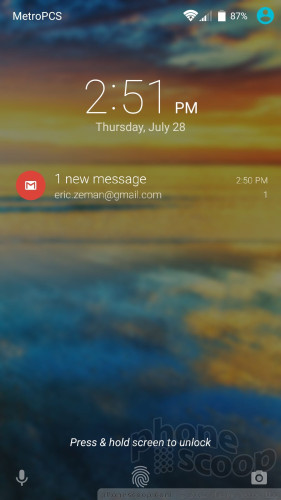
During the initial setup process, ZTE gently suggests you make use of the fingerprint reader to secure your phone. It takes less than a minute to record a fingerprint using the rear-mounted reader. The reader's performance is a bit below average. I had a hard time getting the reader to recognize my print on the first (and sometimes second) attempt, which requires subsequent attempts. When it does recognize the print, it does so quickly but not instantly.
You may also select a PIN, pattern, or password if you want.
The lock screen includes shortcuts to the phone and camera apps. The shortcuts cannot be customized.
Home Screen
The ZMax Pro's Marshmallow operating system has an obvious (but not overbearing) interface skin from ZTE.

Perhaps the most noticeable aspect of the interface is the way ZTE treats app icons. ZTE has created its own icons for most apps, which are big are somewhat cartoonish. The home screen panels and app drawer work like standard Android. That means the home screens can be completely customized with widgets and shortcuts, but the app drawer is limited to a vertical, alphabetical grid.
The Settings menu has a stock Android appearance, but the Quick Settings tool relies on ZTE's fonts and a semi-transparent theme. I'm pleased that the Quick Settings controls can be arranged however you wish. You can also tweak the capacitive buttons (home, back, recent) to suit your personal preferences.
The ZMax Pro does not include themes, nor does it include ZTE's Mi-Pop UI (both of which are featured on the X Max 2.)
Qualcomm's Snapdragon 617 processor powers the ZMax Pro. This is Qualcomm's mid-range CPU. With eight cores at 1.5 GHz, the 617 does a decent job keeping the ZMax Pro running smoothly. I noticed a few hiccups here and there, but nothing out of the ordinary for a low-end device.
Camera
The ZMax Pro doesn't have a dedicated camera button, so you have to use the shortcut on the lock screen or the normal icon on the home screen. The camera is the only app on the phone that feels sluggish, especially when starting up.
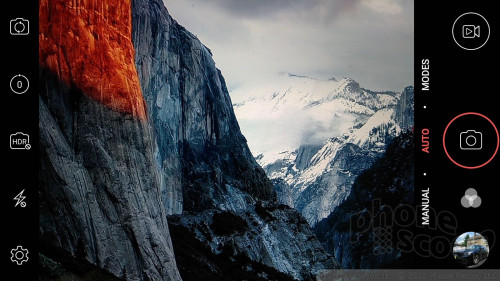
The camera app is largely the same as those on other recent ZTE phones, but fixes one quirk that drove me insane: The ZMax Pro's camera app defaults to the main camera when opened, not the selfie camera as on the X Max 2 and others. Thank goodness for that.
The main camera interface includes a handful of toggles (front cam, timer, HDR, flash, settings) and separate shutter buttons for still and video. HDR can only be set to on or off, but the flash includes on, off, and auto.
The ZMax Pro has six shooting modes: auto, manual, video, slow motion, panorama, and multiple-exposure. The most interesting mode is multi-exposure. With it, you take two pictures and overlay them in a handful of different ways to create a creative image. The tool is rather complicated and requires practice to be used effectively.
The manual mode allows you to adjust shutter speed, white balance, ISO, exposure, and focus. The manual mode includes an always-on grade tool on the screen to help ensure the shot is level, and a three-by-three grid to help with framing.
The camera settings only allow you to adjust the basics, such as aspect ratio, geotagging, and resolution. ZTE did make the settings menu more opaque than on some past phones, making it easier to use.
The camera takes longer to focus, capture, and save images than I want it to.
Photos/Video
The ZMax Pro has a 13-megapixel sensor and it does a decent, if imperfect, job at capturing images. Most of the pictures I shot were in focus, though some were sharper than others. White balance was also good for the most part, with a few exceptions here and there. Exposure variance is probably the most significant issue plaguing the ZMax Pro. You can see in the sample picture of the red shed, for example, how off the exposure is. The same goes for the trees. Alternately, the shot of my car/house and the balloon are nearly perfect. The flash does help when shooting in darker spaces indoors.
The selfie camera, which has a 5-megapixel sensor, produces average results. In the sample below, you can see how my shirt is overexposed, the trees are underexposed, and focus is rather soft. The app does include a smile capture feature (takes the shot when it sees your pearly whites) and a beautification tool for removing skin blemishes. I found the “beautification” results rather disturbing.
The ZMax Pro captures video at a maximum resolution of 1080p (full HD) and the results are decent. Focus, exposure, and white balance are all pretty good, but I noticed an awful lot of grain even when recording in daylight.
The ZMax Pro is a perfectly acceptable device for everyday photography / videography needs.
ZTE / MetroPCS Stuff
The ZMax Pro keeps bloatware in check, thanks to MetroPCS. Aside from the core Android apps and services, MetroPCS installed its own app store, Lookout, MetroZone, My Metro, Name ID, and visual voicemail. The phone has 22.5 GB of storage available to users and it supports memory cards, so you're in good shape.
Wrap-Up
The ZTE ZMax Pro is a hell of a good value. MetroPCS is selling it for $99, which makes it the best bargain in Metro's lineup. Metro has a handful of phones in the $50 to $80 range and more in the $150 to $200 range, but none as balanced as the ZMax Pro.
The ZMax Pro has an attractive design, good screen, solid wireless performance, and excellent battery life. The hardware is well put together. The Android software is powerful and runs well enough on the ZMax Pro. The camera app isn't the quickest I've seen, but the phone does a fine job in capturing usable pictures. On the negative side, I wish the fingerprint reader were most consistent.
Low-cost smartphones have come a long way, and the ZMax Pro is good enough that it will change expectations about the experience that budget phones should deliver.

Comments
No messages


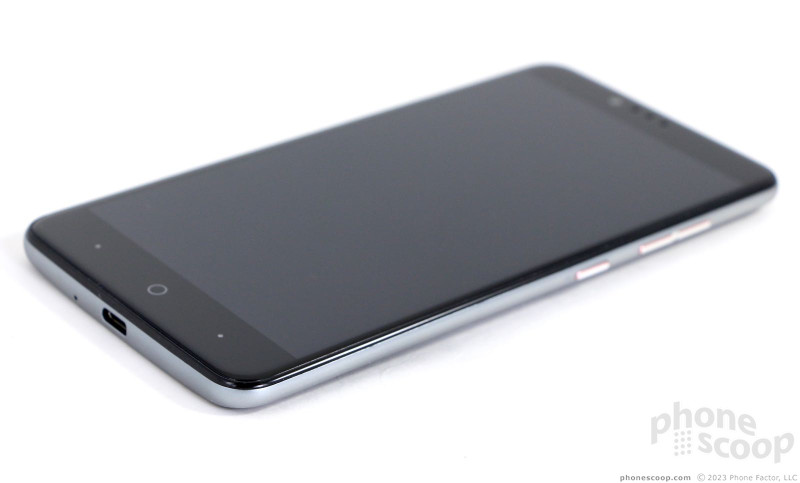























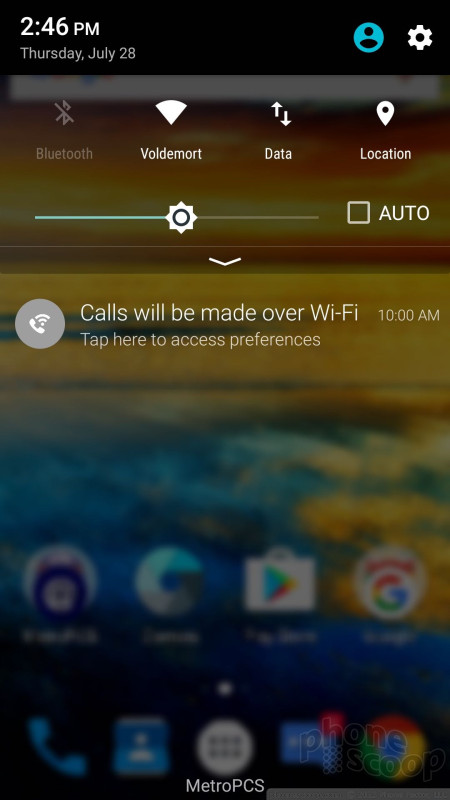







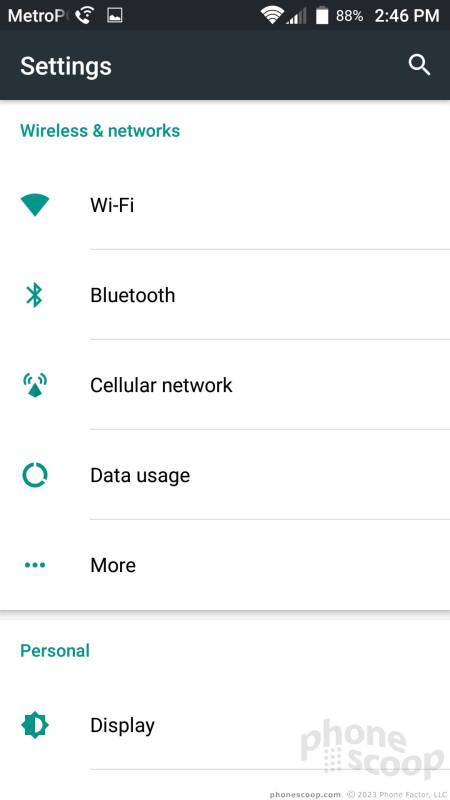




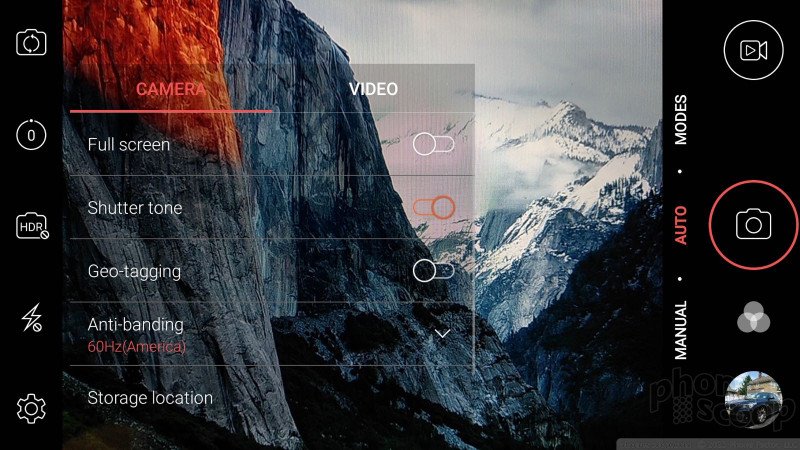






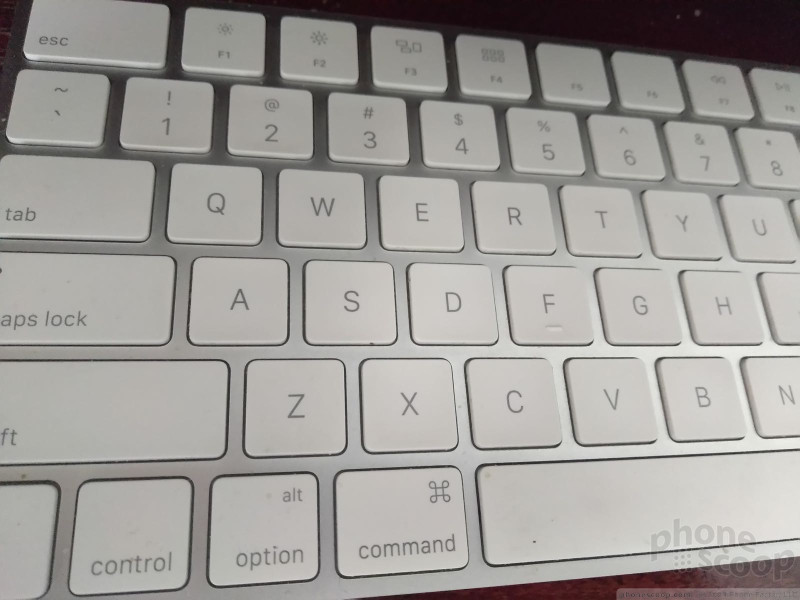













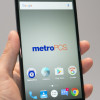 Hands On with the ZTE Z Max Pro for MetroPCS
Hands On with the ZTE Z Max Pro for MetroPCS
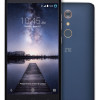 ZTE Debuts ZMAX Pro for MetroPCS
ZTE Debuts ZMAX Pro for MetroPCS
 iPhone 15 Series Goes All-In on USB-C and Dynamic Island
iPhone 15 Series Goes All-In on USB-C and Dynamic Island
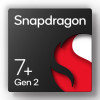 Qualcomm Reveals Most Powerful 7-Series Snapdragon Yet
Qualcomm Reveals Most Powerful 7-Series Snapdragon Yet
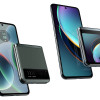 Motorola Gets Serious About Foldables with New RAZR Lineup
Motorola Gets Serious About Foldables with New RAZR Lineup
 ZTE ZMAX Pro
ZTE ZMAX Pro




